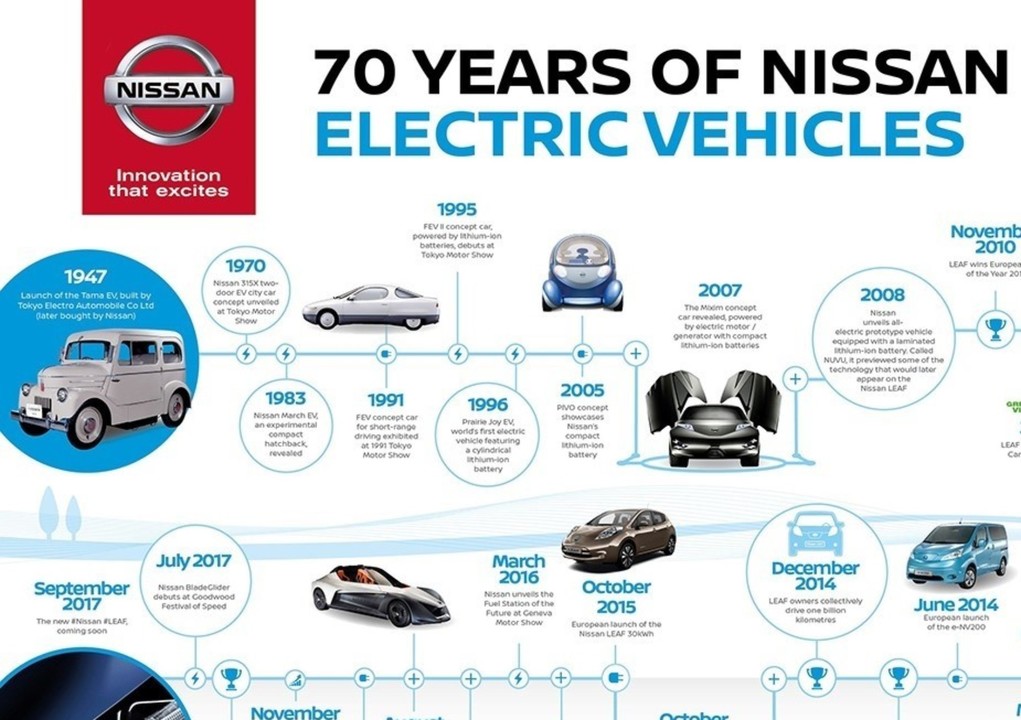How Long Has Nissan Been Around

Alright, let's dive into a bit of Nissan history, specifically, just how long this automotive giant has been churning out cars. It's a question that's not as straightforward as it might seem, and understanding the timeline gives you a better appreciation for the engineering and evolution you see in your own Nissan.
Nissan's Timeline: A Journey Through Automotive History
So, how long has Nissan been around? The answer, while simple in its core, requires a bit of nuance. You can pinpoint the starting gun to 1933 when Jidosha Seizo Co., Ltd. was established. However, this entity later became Nissan Motor Co., Ltd. in 1934. So, depending on how you define "Nissan," you're looking at roughly 90 years, or about 91 years if we’re splitting hairs about the initial company.
Pre-Nissan Days: Kaishinsha Motorcar Works
Before Nissan, there was Kaishinsha Motorcar Works, founded in 1911 by Masujiro Hashimoto. This company produced the DAT car, named after the initials of its founders: Kenjiro Den, Rokuro Aoyama, and Meitaro Takeuchi. Think of this as Nissan's great-grandparent. This is important to note, because the DNA of those early innovations are still present in Nissan's design philosophy today.
Key Specs and Main Parts: The Evolution of a Brand
Now, let’s trace the path of evolution, looking at the key parts that define Nissan. Here's a simplified timeline:
- 1911: Kaishinsha Motorcar Works (producing the DAT car).
- 1933: Jidosha Seizo Co., Ltd. established (proto-Nissan).
- 1934: Nissan Motor Co., Ltd. officially formed.
- Post-WWII: Focus on smaller, more economical cars.
- 1960s-70s: Expansion into international markets, introduction of iconic models like the Datsun 240Z.
- 1980s-90s: Technological advancements (e.g., turbocharged engines, independent suspension) and design innovations.
- 2000s-Present: Focus on EVs (Electric Vehicles) and advanced driver-assistance systems (ADAS).
Key components through the decades vary wildly, but understanding the underlying principles behind the engine design, suspension setup, and electrical architecture is crucial for any DIY mechanic or modder. The early engines, like the L-series, were relatively simple inline engines that are still beloved for their reliability and ease of modification. More modern engines, like the VQ-series, boast more complex designs with variable valve timing (VVT) and multi-port fuel injection.
Suspension systems evolved from simple leaf springs to independent setups with struts or double wishbones, significantly improving handling and ride quality. And the electrical systems? Forget about carburetors and points ignition – now we're talking about electronic control units (ECUs), sensors galore, and complex wiring harnesses.
Understanding Nissan's Design Philosophy
To truly understand Nissan's longevity, it's helpful to grasp its basic design philosophy. Nissan has long prioritized reliability and practicality. Its cars are known for being relatively easy to work on (compared to some European marques, for instance) and for holding up well over time with proper maintenance. That makes them a popular choice for DIYers and modders.
Real-World Use: Basic Troubleshooting Tips
Knowing Nissan's history can actually help with troubleshooting. For example:
- Starting Problems on Older Cars: If you're working on an older Datsun with a carburetor, understanding how that carburetor works is essential. Knowing that the fuel delivery system relies on vacuum and properly adjusted jets can help you pinpoint issues like a clogged fuel filter or a vacuum leak.
- Sensor Issues on Modern Cars: On a newer Nissan with an ECU, a check engine light is your starting point. Understanding the function of each sensor (e.g., MAF sensor, O2 sensor) and how the ECU uses that data is crucial for diagnosing the problem. A scan tool is your best friend here!
- Suspension Noises: Whether you're dealing with a classic 240Z or a modern Altima, understanding the components of the suspension (e.g., bushings, ball joints, struts) can help you identify the source of that annoying squeak or clunk. Look for worn or damaged parts.
Safety – Highlight Risky Components
When working on any car, safety is paramount. Here are some risky components to be aware of on Nissans:
- Fuel System: Gasoline is highly flammable. Always disconnect the battery and work in a well-ventilated area when dealing with the fuel system.
- Electrical System: High voltage systems, especially in modern cars, can be dangerous. Disconnect the battery and use appropriate safety equipment when working on the electrical system.
- Suspension System: Compressed springs can release stored energy with tremendous force. Use spring compressors correctly when removing or installing struts.
- Airbags: Airbags are explosive devices. Disconnect the battery and follow the manufacturer's instructions carefully when working on or around airbags. Always consult the service manual before working on any airbag system!
Always remember to use the appropriate safety gear, including eye protection, gloves, and a respirator when dealing with hazardous materials. Don't hesitate to consult the service manual or a qualified mechanic if you're unsure about something.
Conclusion
So, Nissan's legacy stretches back over nine decades (depending on how you slice it) of engineering, innovation, and building reliable cars. That history is more than just trivia; it's embedded in the design and engineering of every Nissan on the road today. Understanding that lineage can make you a better mechanic, modder, and car owner. And remember, we have the full technical diagrams available for download, so you can truly get to know your Nissan inside and out.
